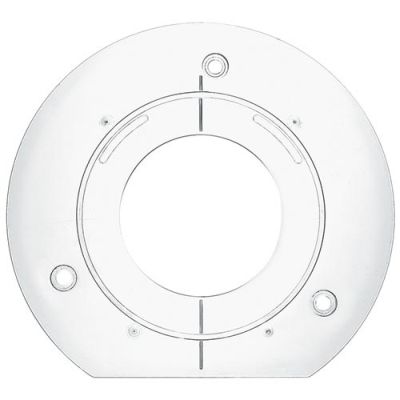"Hard Seams" for Laminate Countertops
Advice on giving special attention to the seamed joints in laminate tops. March 26, 2007
Question
I'm curious as to how others handle their laminate seams. Do you just contact the whole thing and stick it, or do you hard seam it back a few inches off the seam with wood glue? Any pros/cons to these methods?
Forum Responses
(Laminate and Solid Surface Forum)
From contributor G:
We used to (couple years ago now) glue it, stick it, forget it, but after a couple of complaints about the seams opening, we started to hard seam them one inch back from the seam with melamine glue. Since we have been doing them this way, we haven't gotten any complaints. Don't really know if it is because of doing them with the glue, or people just don't have the time to complain.
From the original questioner:
Why melamine glue? Does it hold better in this application than a yellow such as Titebond?
From contributor G:
Don't know what got me onto melamine glue, but I'll tell you what - I've peeled a couple of sample tops off after they have dried and boy, does that glue hold tight.
From contributor D:
I used to use Titebond an inch back from the seam. A few years ago, I worked for a shop that would "Vulcanize" their seams. Basically, having laid up our seam, we would take a heat gun and heat the seamed area just hot enough that it wouldn't blister. Then we'd let it cool down, then repeat the process twice more. Just heat and cool, three times. Never had any failures. If you decide to try this and are nervous about heating lam so many times to such a hot temp, find out what the temperature is that the lam will post form at and then use a few dabs of Templac 20 degrees less than the post forming temp to help you gauge when it has reached the right temp to let it cool down.
From contributor A:
Do you re-roll the seam every time you heat it? I would think the heat would soften the glue and you would want to keep it under pressure until it cools down. I have never had any problems with seams (that I know of) and I never use a hard line. But an ounce of prevention is worth a pound of cure. I think I might play with it. Thanks for the idea.
From contributor D:
No, amazingly, we didn't do any re-rolling after the initial rollout following seaming with an underscribe laminate trimmer. Your thoughts regarding the heat softening the glue line were the same thoughts I had when the foreman of the company explained their process to me. The surfaces of the two seamed pieces of laminate were always as flat and level after vulcanizing as they were prior to that.
It was at a shop in Central Illinois. Red flammable spray grade was the contact they used. They manufactured mainly commercial type case work and tops. Those were the days when you could still spray flammable contact cement. I'm in California now and everything is water based. Ever work with contact cement that has a 2-4 minute open working time? Longer than that and you have to re-spray.
From contributor T:
How exactly do you do a hard seam? Do you leave a bare strip where you will apply the yellow glue, or do you use the yellow glue over the contact cement?
From contributor D:
I like to mirror match cut my seam first. Then mark a line on my substrate, usually particleboard. Then tape both the substrate and the laminate with a strip of 1" wide masking tape, set flush to the lam edge - on the underside of the lam, of course. On the substrate put a strip on both sides of your reference line. After you spray up your lam and core, peel the 4 strips of tape off and make an application of the glue of your choice. Now lay up your pieces of lam and roll out the top. Clean up the squeeze out from the glue really well and take 2 wide (I usually use a piece of hard maple 3/4" x 3") clamping cauls, as flat as possible, I might add, and clamp the seamed area to allow it to dry. Make sure you tape one face of the caul to prevent gluing the caul to the laminate. Also, when you clamp the cauls into place, try to use some deep throated clamps to reach the area near the center of the clamping caul. The better you clamp the seam, the flatter and smoother it will be when you unclamp it. Remember, being hard glued into place, there will be no adjustment possible after the glue sets.
